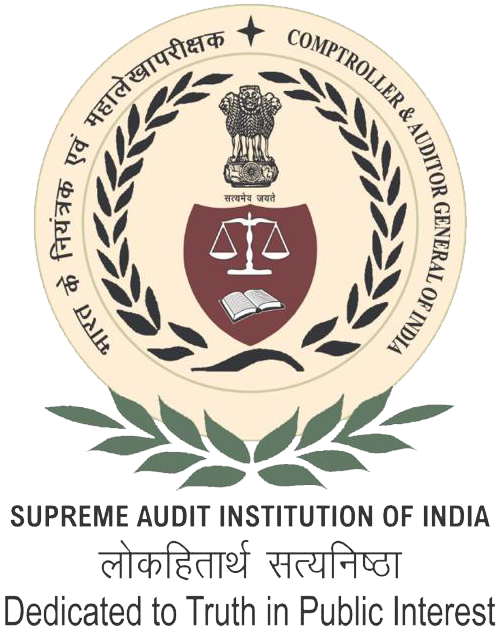Interface with Legislation
Committees of Legislature
Legislative control over finances is exercised mainly in two stages. The first is at the time of policy-making and the second while reviewing the implementation of the policy. The legislature has the control of the purse and determines the quantum of resources and the manner of raising and spending the same. The initial control is exercise at the time of the presentation of the annual budget or the Annual Financial Statement, showing the estimated receipts and proposed expenditure of the Government, for the financial year. The second stage of control viz. the control over the implementation of the policies, is to review whether the moneys voted by the legislature have been utilized for the purposes for which and in manner in which the legislature wanted them to be utilized.
The financial accountability of the executive to the Legislature is ensured through a system of committees. There are three financial committees namely The Estimates Committee, the Public Accounts Committee (PAC), and the committee on Public Undertakings (CoPU) which are set up under the Rules of Procedure and Conduct of Business in the Lok Sabha/ Vidhan Sabhas of the States.
The Estimates Committee is entrusted with the responsibility of undertaking detailed examinations of budget estimates put forth by the Government in respect of each administrative department.
Public Accounts Committee
The PAC is accorded a pivotal role in ensuring financial accountability. The PAC of the Parliament is constituted every year under Rule 308 (Annex 1) of the Rules of Procedure and Conduct of Business in the Lok Sabha. In the States also, similar arrangements exist.
The functions of the Committee include examination of accounts showing the appropriation of sums granted by the legislation for the expenditure of the Government, the annual finance accounts of the Government and such other accounts laid before the House as the Committee may think fit. In scrutinising the Appropriation Accounts of the Government and the Report of the CAG thereon, the Committee has to satisfy.
(a) that the moneys shown in the accouts as having been disbursed were legally available for, and applicable to, the service or purpose to which they have been applied or charged;
(b) that the expenditure conforms to the authority which governs it;
(c) that every re-appropriation has been made in accordance with the provisions made in this behalf under rules framed by the competent authority.
It is also the duty of the Committee
(a) to examine the statements of accounts showing the income and expenditure of autonomous and semi-autonomous bodies, the audit of which may be conducted by the CAG of India either under the directions of the President or by a statute of Parliament; and
(b) to consider the report of the CAG in cases where the President may have required him to conduct an audit of any receipts or to examine the accoutns of stores and stocks.
The functions of the committee extend however,"beyond the formality of expenditure, to its wisdom, failthfulness and economy". The Committee thus examines cases involving losses, nugatory expenditure and financial committee examines various aspects of the Government's tax administration, cases involving under-assessments, tax-evasion, non-levy of duties, misclassifications etc., identifies the loopholes in taxation laws and procedures and makes recommendations in order to check leakage of revenue.
Regularization of Excess/ Savings over grants-
One of the duties of the Committee is to ascertain that money granted by the legislature has been spent by the Government withing hte scope of the demand. It considers the justification for spending more or less than the amount origially sanctioned. If any money has been spent by the Government on a service in excess of the amout granted by the House for the purpose, the committee examines the same with reference to the facts of each case, as well as the circumstances leading to such an excess and makes such recommendations as it deems fit. Such excesses are, thereafter, required to be brought up before the House by Government for regularization in the manner envisaged in Article 115 of the Constitution. To facilitate speedy regularization of such excess expenditure by the legislature, the committee presents a consolidated report relating to all Ministries/departments in advance of other reports.
The committee looks upon savings arising from incorrect estimation or other defects of procedure with no more leniency than it does upon excesses. It regards estimation on the higher side to be as faulty as estimation on the lower side. In the words of the committee "from one point of view, higher or 'safe' estimation might be regarded as even more objectionable, as it might easily lead to extravagance, waste or worse".
Committee on Public Undertakings
The committee on Public Undertaking (CoPU) is constituted every year under Rule 312A of the Rules of Procedure and Conduct of Business in the Lok Sabha for the examination of the working of the Public Undertakings. In the states also, similar arrangement exists.
The functions of the Committee are:
- To examine the Reports and accounts of Public Undertakings;
- To examine, in the contet of the autonomy and efficiency of the public undertakings, whether the affairs of the public undertakings are being managed in accordance with sound business principles and prudent commercial practices and
- To exercise such other functions as are vested in the PAC and the Estimates Committee in relation to the public undertakings
However, CoPU is precluded from examining and investigating-
- Any matters of major Government policy as distinct from business or commercial functions of the public undertakings;
- Matters of day to day administration and
- Matters for the consideration of which machinery is established by any special statute under which a particular public undertaking is established.

